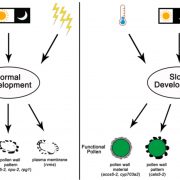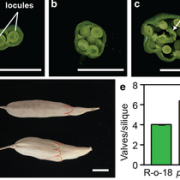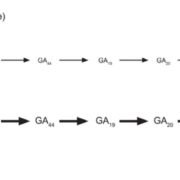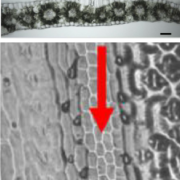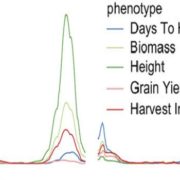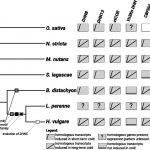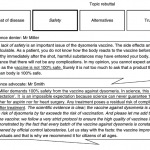GmFT2a and GmFT5a collectively controls flowering of soybean (Plant Biotech. J)
 Soybean [Glycine max (L.) Merr.] is a globally important high-protein crop, whose breeding is an ongoing, important objective for plant biologists. Since soybean is a short-day plant, controlling flowering time is a key step to influence its adaptation to diverse latitudes and farming system. Recently, Yupeng Cai et al found that two classical flowering regulator GmFT2a and GmFT5a, collectively rather than redundantly control flowering time of soybean under different photoperiods. GmFT2a affects prominently under short-day conditions, GmFT5a is mainly responsible for long-day conditions. Double mutant ft2aft5a produced significantly increased numbers of pods and seeds than wild type soybean. These results contribute further study of the regional adaptability of new soybean varieties, to accelerate molecular breeding for the world. (Summarized by Nanxun Qin) Plant Biotech J. 10.1111/pbi.13199
Soybean [Glycine max (L.) Merr.] is a globally important high-protein crop, whose breeding is an ongoing, important objective for plant biologists. Since soybean is a short-day plant, controlling flowering time is a key step to influence its adaptation to diverse latitudes and farming system. Recently, Yupeng Cai et al found that two classical flowering regulator GmFT2a and GmFT5a, collectively rather than redundantly control flowering time of soybean under different photoperiods. GmFT2a affects prominently under short-day conditions, GmFT5a is mainly responsible for long-day conditions. Double mutant ft2aft5a produced significantly increased numbers of pods and seeds than wild type soybean. These results contribute further study of the regional adaptability of new soybean varieties, to accelerate molecular breeding for the world. (Summarized by Nanxun Qin) Plant Biotech J. 10.1111/pbi.13199


